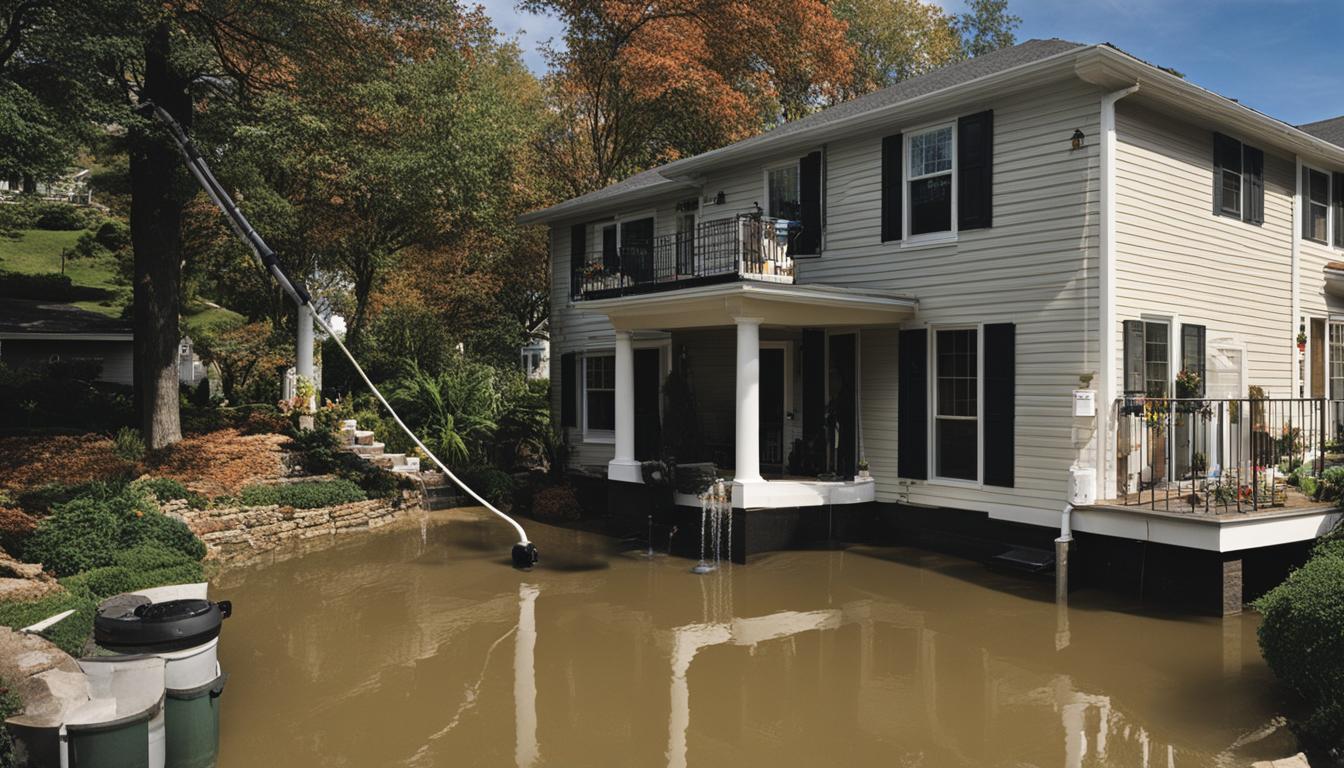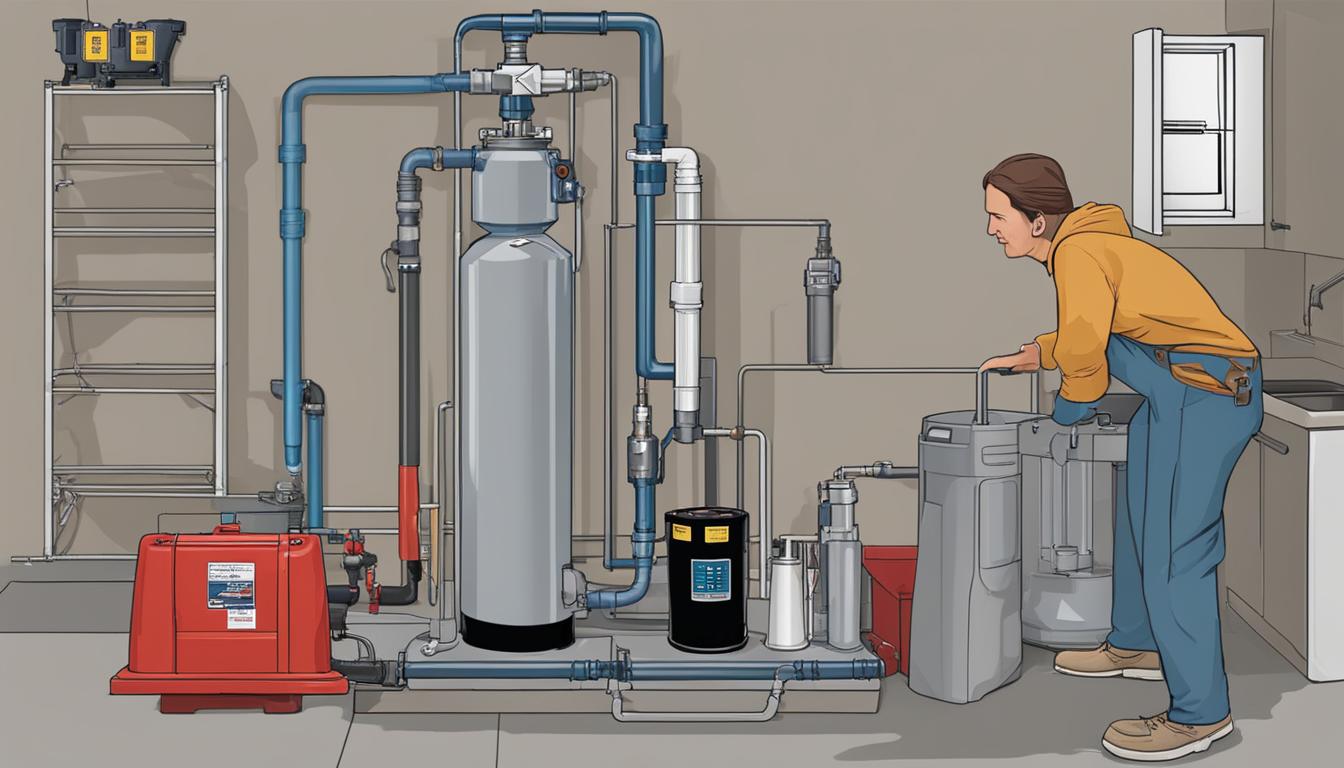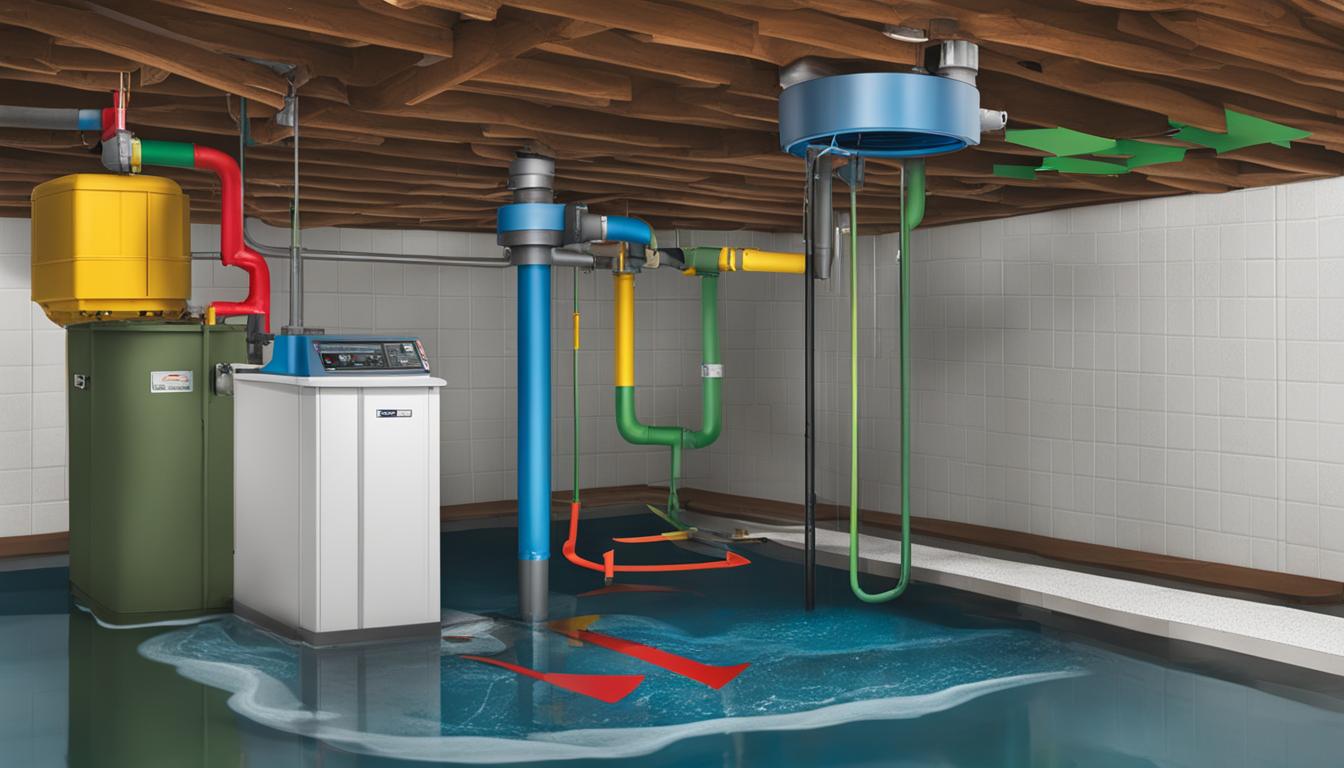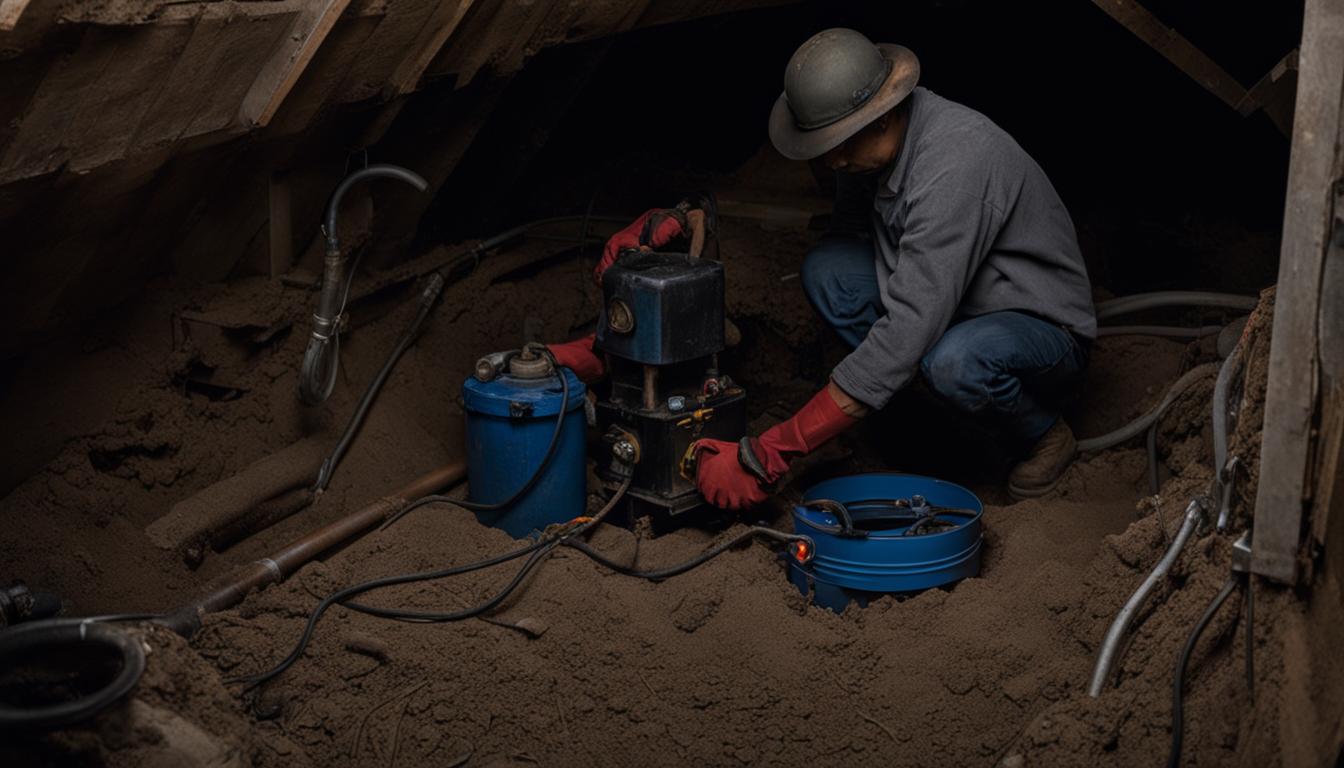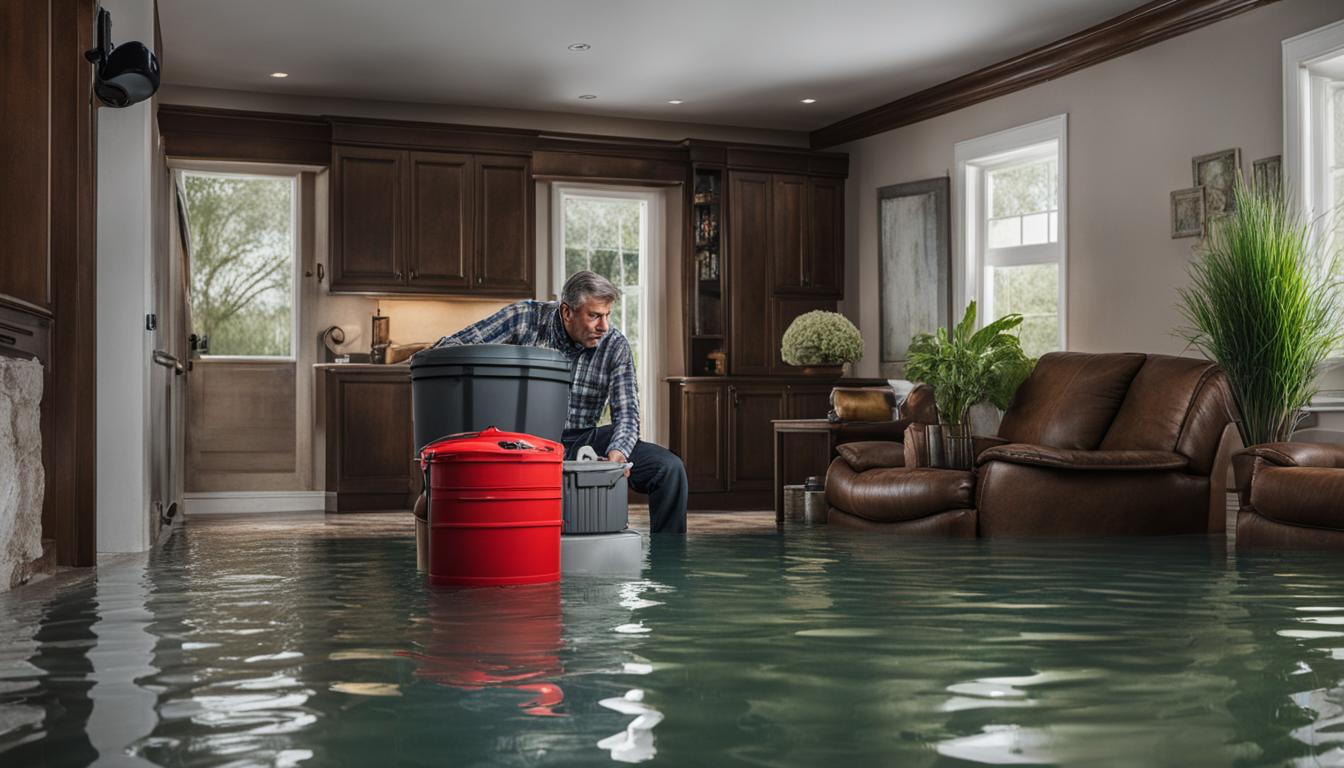Welcome to our exploration of the latest innovations in flood control through water-powered sump pumps. In this article, we will take a deep dive into the technology behind these pumps, their benefits, advanced features, and their role in efficient water management. You’ll also learn about the evolution of sump pump technology and real-life case studies that highlight their effectiveness.
Water-powered sump pumps are a game-changer in flood control. They are designed to effectively pump out the excess water that accumulates in basements and crawl spaces during heavy rain or flooding. These pumps use water pressure to function, eliminating the need for electricity or battery backups, making them an energy-efficient and cost-effective solution. With advancements in technology and innovative features, these pumps are becoming increasingly popular among homeowners who value efficient and reliable flood control.
Join us in exploring the world of water-powered sump pumps and learn about their impact on flood control.
Key Takeaways
- Water-powered sump pumps are a revolutionary solution for flood control.
- They use water pressure to function, eliminating the need for electricity or battery backups.
- These pumps are energy-efficient, cost-effective, and environmentally friendly.
- Advanced features, such as smart technology integration and enhanced safety mechanisms, make these pumps more effective in flood control and home safety.
- Effective water management is crucial in flood control, and water-powered sump pumps play a vital role in maintaining optimal water levels.
Understanding Water-Powered Pumps
Before we dive into the latest innovations in water-powered sump pumps, it’s important to have a solid understanding of how these pumps work and their role in flood control.
Water-powered pumps operate using the principle of water pressure. When groundwater levels rise, water is redirected through a series of valves and pipes to activate the pump. As water flows through the pump, it creates a vacuum that lifts the water up and out of the basement or crawl space. Unlike electric pumps, water-powered pumps don’t require electricity to operate. Instead, they use the water supply from the municipality or well to pump water out of your home.
Water-powered pumps are commonly used as backups to electric pumps or as the primary pump in areas where electricity is unreliable or inaccessible. With no mechanical components, these pumps are designed to operate for extended periods with minimal maintenance.
The Benefits of Water-Powered Sump Pumps
As we explore the latest innovations in flood control technology, it’s important to consider the various benefits of water-powered sump pumps. These pumps offer a range of advantages over traditional electric pumps, making them a popular choice among homeowners.
Energy Saving
One of the primary benefits of water-powered sump pumps is their energy-saving capabilities. Unlike electric pumps, which require a constant source of electricity to function, water-powered pumps use the pressure of incoming water to generate power. This means they don’t require any electricity or backup power sources to operate. As such, they provide a more sustainable approach to flood control, reducing both energy costs and carbon emissions.
Reduced Environmental Impact
Water-powered sump pumps are also more environmentally friendly than electric pumps. With no need for electricity or fuel, they produce no harmful emissions or pollutants. They also use less water than traditional backup pumps, which can help conserve water and reduce waste.
Improved Pump Efficiency
Water-powered sump pumps are highly efficient and reliable, with a long lifespan and minimal maintenance requirements. They operate using a simple mechanical design, which means fewer moving parts and less wear and tear. This translates to lower repair and replacement costs over time, making them a cost-effective choice for homeowners.
Did you know? The efficiency of a water-powered sump pump is typically measured in terms of gallons of water pumped per gallon of water used. Most water-powered pumps have an efficiency rating of around 1:3, meaning they pump three gallons of water for every one gallon of water used.
Overall, the benefits of water-powered sump pumps make them an attractive option for flood control and water management. They offer a sustainable, efficient, and cost-effective solution to protect your home from water damage.
Advanced Features in Water-Powered Sump Pumps
Modern water-powered sump pumps are equipped with advanced features that improve their flood control capabilities and enhance the safety of your home. Let’s take a look at some of the most innovative features available:
Integrated Backup Systems
Water-powered sump pumps now come with integrated backup systems that ensure reliable pumping even during power outages. In case of an emergency, the backup system kicks in automatically, providing uninterrupted water removal.
Smart Technology Integration
Some water-powered sump pumps are now compatible with smart technology, allowing you to monitor and control your pump remotely. This feature provides convenience and peace of mind, as you can keep an eye on the health of your pump and detect problems before they become emergencies.
Improved Safety Mechanisms
Water-powered sump pumps are designed with advanced safety mechanisms that reduce the risk of accidents and protect your home. Many pumps now come with warning alarms that alert you to potential problems, such as excessive water levels or mechanical failures.
Additionally, some pumps feature a high-water alarm that immediately alerts you when water levels in your sump pit reach a dangerous level. This warning helps to prevent flooding and minimize damage to your home.
Enhanced Efficiency
New technology has enabled water-powered sump pumps to operate with greater efficiency, reducing energy consumption and lowering utility bills. These pumps are designed to conserve energy by using water pressure to create suction, rather than relying on electricity to power the pump.
This feature not only reduces energy costs but also has a positive impact on the environment, making water-powered sump pumps a more sustainable option for flood control.
Self-Testing Mechanisms
Many water-powered sump pumps now come with self-testing mechanisms, which allow you to test your pump’s performance and ensure its reliability. These mechanisms perform regular tests that check the pump’s functionality and measure its overall efficiency.
This feature is particularly important for homeowners who live in flood-prone areas, as it enables them to detect potential problems and address them before they become major issues.
These advanced features in water-powered sump pumps are transforming flood control and enhancing home safety. Consider incorporating these innovative pumps into your home’s flood control system to ensure optimal protection against the damaging effects of floods.
The Evolution of Sump Pump Technology
Understanding the development of sump pump technology is essential in comprehending the latest innovations in flood control. Over time, sump pumps have become increasingly sophisticated, incorporating new features and technologies designed to maximize their efficiency and effectiveness in protecting homes from water damage.
In the early years, sump pumps were simple devices that utilized a motor to pump water out of basements and crawl spaces. They had limited power, which made them susceptible to failure during heavy flooding. This early generation of pumps also required regular maintenance to prevent clogs and ensure proper operation.
As sump pump technology progressed, manufacturers focused on improving the durability and reliability of their products. They started using stronger motors, reinforced housing, and higher-quality materials that could withstand harsh weather conditions and heavy usage. This led to the development of more powerful sump pumps that could handle larger volumes of water and operate for longer periods without maintenance.
Water-Powered Pumps
A major breakthrough in sump pump technology came with the introduction of water-powered pumps. These pumps utilize the pressure of water from a home’s municipal supply to create the suction necessary to pump water out of the sump pit. This eliminates the need for a backup battery or electricity during power outages.
Water-powered pumps also offer increased reliability and efficiency, as they do not rely on mechanical components that can wear down or malfunction. Instead, they utilize the natural pressure of the municipal water supply to pump water out of the pit, which makes them less prone to failure and easier to maintain.
Innovations in Pump Technology
Recent advancements in sump pump technology have further enhanced the performance and reliability of these essential flood control systems. For example, many modern sump pumps now come equipped with alarms and sensors that can detect high water levels and potential malfunctions. This can help homeowners proactively address potential issues before they become major problems.
Smart technology integration is another area of innovation in sump pump technology. Many pumps now come with Wi-Fi connectivity and smartphone apps that allow homeowners to monitor their sump pump performance from anywhere. This advanced feature provides peace of mind to homeowners, as they can receive real-time alerts and updates on the performance of their flood control system.
The Future of Sump Pump Technology
The future of sump pump technology is exciting, with continued innovation focusing on improving efficiency, reliability, and ease of use. For example, some manufacturers are exploring the use of artificial intelligence and machine learning technologies to improve pump performance and predict potential malfunctions.
Other potential areas of innovation include the use of renewable energy sources to power sump pumps, as well as the integration of sensors that can detect changes in humidity levels and temperature. These developments have the potential to further revolutionize flood control and protect homes from water damage in even more efficient and sustainable ways.
Water Management with Sump Pumps
Water-powered sump pumps play a crucial role in effective water management, especially in flood-prone areas. These pumps help to maintain optimal water levels in basements and crawl spaces while mitigating flood risks. In this section, we will explore how water-powered sump pumps contribute to efficient water management.
The Role of Water-Powered Sump Pumps in Flood Control
A water-powered sump pump operates by harnessing the energy of flowing water to pump out excess water from basements and crawl spaces. This mechanism enables these pumps to function even during power outages or when the primary sump pump fails.
Water-powered sump pumps are a reliable and energy-efficient solution for flood control. They can pump up to 2,000 gallons of water per hour, depending on the water pressure and flow rate. Moreover, these pumps are eco-friendly since they do not consume any electricity, reducing their environmental impact.
Effective Water Management with Water-Powered Sump Pumps
Water management is critical in areas that are susceptible to floods, and water-powered sump pumps play a crucial role in this regard. These pumps help to prevent water damage to your home and maintain a safe water level in basements and crawl spaces.
Apart from flood control, water-powered sump pumps enhance water management in several ways. They prevent the buildup of mold and mildew caused by excess moisture and reduce the risk of structural damage to your home’s foundation. Also, by pumping out standing water, they help to improve indoor air quality.
Additional Benefits of Water-Powered Sump Pumps for Water Management
Water-powered sump pumps offer several other advantages for effective water management. Here are some of the benefits:
- Low Maintenance: Water-powered sump pumps have few moving parts, making them less prone to failure and easier to maintain.
- Cost-effective: These pumps are cheaper to install than their electric counterparts, and they do not require any electricity to operate, making them more cost-effective in the long run.
- Easy Installation: Water-powered sump pumps are easy to install and do not require any electrical wiring or an external power source.
In summary, water-powered sump pumps are an excellent investment for effective water management in flood-prone areas. They are reliable, cost-effective, and energy-efficient solutions that can prevent water damage to your home and protect your family’s health.
Installation and Maintenance Tips for Water-Powered Sump Pumps
Installing and maintaining water-powered sump pumps is crucial for ensuring their optimal performance in flood control. Here are some tips to help you with the process.
Installation Tips
Before installing your water-powered sump pump, make sure to gather all the necessary tools and equipment, including a discharge hose, clamps, and a check valve. Follow these steps for a successful installation:
- Choose the right location: Choose a location near your sump basin and close to a power outlet.
- Prepare the sump basin: Clear any debris and ensure that the basin is clean and level.
- Assemble the pump: Follow the manufacturer’s instructions to assemble the pump components.
- Install the check valve: Install the check valve on the discharge pipe to prevent backflow of water.
- Join the discharge hose: Connect the discharge hose to the pump and secure it with clamps.
- Test the pump: Fill the sump basin with water and test the pump to ensure it is working correctly.
Maintenance Tips
Regular maintenance is essential for keeping your water-powered sump pump in good working condition. Here are some maintenance tips:
- Inspect the pump: Regularly check the pump for any signs of wear and tear, such as cracks or leaks.
- Clean the intake screen: Clean the intake screen to prevent clogs and ensure the pump is drawing water properly.
- Test the pump: Test the pump periodically to ensure it is working correctly.
- Replace the battery: If your sump pump is battery-powered, replace the battery once every two to three years to ensure it is fully charged in case of a power outage.
By following these installation and maintenance tips, you can ensure your water-powered sump pump is operating at its peak efficiency and providing effective flood control for your home.
Assessing the Reliability of Water-Powered Sump Pumps
When it comes to flood control, one of the primary concerns is the reliability of the sump pump. This is especially true for water-powered sump pumps, as they rely on water pressure to function.
However, advancements in technology have greatly improved the reliability of water-powered sump pumps in recent years. These pumps are now designed with enhanced safety mechanisms, such as backflow preventers, to prevent system failures and ensure continuous operation. Additionally, they require minimal maintenance and have a longer lifespan compared to traditional electric sump pumps.
But how do water-powered sump pumps compare to other flood control solutions in terms of reliability? Let’s take a look:
| Water-Powered Sump Pumps | Battery Backup Sump Pumps | Electric Sump Pumps | |
|---|---|---|---|
| Reliability | High, especially with improved safety mechanisms and minimal maintenance required | Moderate, dependent on the battery life and capacity | Moderate, dependent on the power source and potential electrical malfunctions |
| Cost | Low to moderate | Moderate to high | Low to moderate |
| Ease of Use | Low maintenance and easy to operate | Requires periodic battery replacement and manual maintenance | Requires periodic maintenance and electrical expertise |
As shown in the table above, water-powered sump pumps offer high reliability at a lower cost and with minimal maintenance requirements. They are also easier to use compared to battery backup and electric sump pumps.
In summary, advancements in technology have greatly improved the reliability of water-powered sump pumps, making them a viable option for flood control. When compared to other flood control solutions, they offer high reliability, low cost, and ease of use.
Case Studies: Success Stories in Flood Control
Real-life examples demonstrate the effectiveness of water-powered sump pumps in flood control. Below, we highlight some success stories that showcase the capabilities of these innovative pumps.
Flooded Basement Saved with Water-Powered Sump Pump
In December 2020, the Midwest experienced record-breaking rainfall that caused widespread flooding. A family in Iowa was hit hard, with their basement flooding after just one day of heavy rain. They had a battery-powered sump pump, but it failed to keep up with the amount of water pouring in.
Desperate for a solution, they turned to a water-powered sump pump that a neighbor had recommended. Within minutes of installation, the pump began removing water from the basement at a rate of 1,000 gallons per hour. They were able to avoid significant water damage, and the pump continued to run until the rain stopped and the water receded.
Flooded Crawl Space Dry in a Matter of Hours
A homeowner in Florida experienced frequent flooding in their crawl space due to heavy rains and high groundwater levels. They had tried using a dehumidifier and a traditional sump pump, but the flooding persisted and began to threaten the structural integrity of their home.
After researching different options, they decided to install a water-powered sump pump. The pump was able to quickly and efficiently remove water from the crawl space, keeping the area dry and preventing further damage. The homeowner was impressed by the ease of installation and the low maintenance required for the pump to operate effectively.
Energy-Efficient Flood Control Solution
A homeowner in Massachusetts was concerned about the energy consumption of their traditional electric sump pump and the environmental impact it was having. They began researching energy-efficient alternatives and discovered water-powered sump pumps.
After installing a water-powered sump pump, they were pleased to see a significant decrease in their energy bills and felt better about their reduced carbon footprint. They also appreciated the simplicity and reliability of the pump, which had no moving parts and required minimal maintenance.
These success stories demonstrate the versatility and effectiveness of water-powered sump pumps in flood control. With a range of advanced features and the ability to operate without electricity, these innovative pumps offer a dependable solution for protecting homes against water damage.
Comparing Water-Powered Pumps with Other Flood Control Solutions
When it comes to flood control, there are several options available in the market. Each solution has its own set of advantages and disadvantages, and it’s essential to compare them to determine the most suitable one for your home. In this section, we will compare water-powered pumps with other flood control solutions and analyze their strengths and limitations.
Flood Control Solutions Comparison Table
| Water-Powered Pumps | Battery Backup Pumps | Electric Pumps | Gravity Drainage Systems | |
|---|---|---|---|---|
| Cost | Low | Medium | High | High |
| Efficiency | Medium | High | High | Low |
| Reliability | Medium | High | High | Low |
| Environmental Impact | Low | Low | High | Low |
| Installation Complexity | Low | Low | High | High |
Table: Comparison of different flood control solutions.
As seen in the table, water-powered pumps have a low cost, low environmental impact, and low installation complexity. However, they have medium efficiency and reliability. On the other hand, electric pumps have high efficiency and reliability, but their cost and impact on the environment are high. Battery backup pumps strike a balance between cost and efficiency, but they require periodic battery replacement, which affects their reliability. Gravity drainage systems are efficient but are expensive and difficult to install.
It’s important to note that no single solution is perfect for every situation. The choice of flood control system depends on several factors such as the severity of flooding, the size of the area to be protected, and the available resources.
At the end of the day, it’s not about finding the perfect solution, but rather finding the one that best fits your needs and budget – and that’s where water-powered sump pumps are an excellent option. Their affordability, ease of installation, and reliability make them a competitive solution.
Conclusion: While water-powered pumps may not be the most efficient or reliable option, they offer numerous benefits that make them a worthwhile consideration.
Future Trends in Water-Powered Sump Pump Technology
As technology continues to evolve, so do the possibilities for flood control and water management. Here are some of the most promising future trends in water-powered sump pump technology:
- Increased energy efficiency: With a focus on sustainability, advancements in water-powered sump pumps will likely prioritize energy efficiency to reduce power consumption and environmental impact.
- Smart technology integration: With the rise of the Internet of Things (IoT), water-powered sump pumps may incorporate smart technology to optimize performance and provide real-time data on water levels and flood risks.
- Improved reliability: Through enhanced safety mechanisms and durable materials, future water-powered sump pumps will likely offer increased reliability to ensure effective flood control.
- Remote monitoring and control: As remote work becomes more prevalent, water-powered sump pumps may offer remote monitoring and control capabilities, allowing homeowners to access and adjust pump settings from anywhere.
- Integration with other systems: Water-powered sump pumps may integrate with other home systems, such as HVAC and plumbing, to create a comprehensive water management solution.
The Role of Innovation in Flood Control
Innovation is key in the ongoing battle against floods. With the emergence of new technologies and solutions, we have the power to protect our homes and communities from the damaging effects of water. By continually pushing the boundaries of what is possible, we can create a safer and more sustainable future for all.
At its core, innovation helps us stay one step ahead of the forces of nature. By harnessing the power of technology, we can mitigate flood risks and minimize water damage, safeguarding our homes and enhancing our quality of life. With water-powered sump pumps, we have a powerful tool in our arsenal for protecting against flooding and managing water effectively. And with ongoing advancements in technology, we can look forward to even more innovative solutions in the future.
Conclusion
As we conclude this discussion on water-powered sump pumps and their impact on flood control, it’s clear that the latest advancements in sump pump technology are transforming the way we manage water in our homes. From improving pump efficiency to reducing environmental impact, water-powered pumps offer a range of benefits that make them an attractive option for homeowners.
Perhaps the most notable advantage of water-powered sump pumps is their ability to enhance home safety by minimizing the risk of flood damage. By effectively managing water levels in basements and crawl spaces, these pumps provide reliable flood control and protect homes from costly water damage.
Staying Ahead of the Game
As with any technology, it’s important to stay up-to-date with the latest advancements in water-powered sump pumps. By keeping abreast of emerging trends and new features, homeowners can ensure their flood control systems are operating at maximum efficiency. Regular maintenance and upkeep are also crucial for maintaining the reliability and longevity of these pumps.
As we move forward, we can expect to see even more advancements in water-powered sump pump technology. Emerging trends such as smart technology integration and enhanced safety features are just a few examples of the potential innovations that could revolutionize flood control in the coming years.
The Importance of Flood Control
In a world where climate change is causing more frequent and severe weather events, effective flood control is more important than ever. By investing in water-powered sump pumps and other flood control solutions, we can protect our homes and communities from the devastating effects of flooding.
We hope this article has been informative and helpful in providing a better understanding of water-powered sump pumps and their role in flood control. Remember to stay vigilant and proactive when it comes to protecting your home from water damage, and always seek professional assistance when necessary.
FAQ
How do water-powered sump pumps work?
Water-powered sump pumps operate using the power of flowing water. They are installed in a sump pit and use water pressure to create a vacuum that pulls water out of the pit and away from your home.
What are the benefits of using water-powered sump pumps?
Water-powered sump pumps offer several advantages, including energy efficiency, reduced environmental impact, and increased pump efficiency. They are also a reliable backup option in case of power outages.
What advanced features do water-powered sump pumps have?
Modern water-powered sump pumps come with advanced features such as enhanced safety mechanisms, smart technology integration, and remote monitoring capabilities. These features ensure optimal flood control and improved home safety.
How has sump pump technology evolved over time?
Sump pump technology has advanced significantly, leading to the development of water-powered pumps. These innovations have greatly improved flood control capabilities and made sump pumps more efficient and reliable.
How do water-powered sump pumps contribute to water management?
Water-powered sump pumps play a vital role in effective water management by mitigating flood risks and maintaining optimal water levels in basements and crawl spaces. They help prevent water damage and ensure a safe living environment.
What are some installation and maintenance tips for water-powered sump pumps?
When installing a water-powered sump pump, it’s important to follow best practices and ensure proper maintenance. Regular inspections, cleaning the pump, and testing its operation are key maintenance tasks to keep it functioning efficiently.
Can water-powered sump pumps be relied upon for flood control?
Yes, advancements in technology have significantly improved the reliability of water-powered sump pumps. When installed and maintained correctly, they are a dependable option for flood control and can provide peace of mind for homeowners.
Are there any success stories of water-powered sump pumps preventing flooding?
Absolutely! Many real-life case studies demonstrate the effectiveness of water-powered sump pumps in preventing flooding and minimizing water damage. These success stories highlight the importance of having a reliable flood control system in place.
How do water-powered pumps compare to other flood control solutions?
When comparing water-powered sump pumps with other flood control solutions, factors such as cost, efficiency, and reliability should be considered. Each option has its strengths and limitations, so it’s important to choose the system that best suits your needs.
What can we expect in terms of future trends in water-powered sump pump technology?
The future of water-powered sump pump technology looks promising, with emerging trends focusing on enhancing flood control capabilities and improving water management. Continued advancements in smart technology integration and efficiency are expected.
